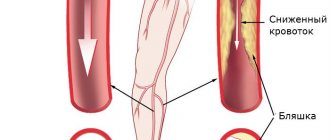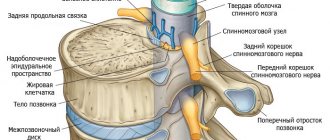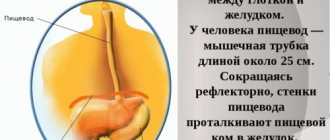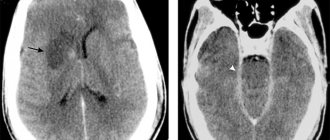Polydactyly is a congenital pathology of the development of fingers, which is expressed in an increase in their number . It is most often seen on the hands, but can also affect the toes, or both the upper and lower extremities.
As a rule, this anatomical defect is inherited as a dominant trait in polydactyly in one of the parents. It is not life-threatening, but can cause psychological trauma, impair limb function, as well as slow down physical development and limit the choice of profession in the future.
According to statistics, polydactyly occurs with equal frequency in boys and girls. According to various sources, it is observed in one in 660-3300 infants and can be combined with other hereditary disorders of the musculoskeletal system, such as syndactelia, brachydactyly and joint dysplasia.
What it is
Polydactyly is a pathological disorder of the intrauterine formation of the fetus, the main manifestation of which is a violation of the anatomical relationships of the osteoarticular apparatus of the feet or hands, expressed in the development of an excess number of fingers. The pathology is exclusively congenital in nature and is a consequence of genetic mutations or negative factors that affected the woman’s body during pregnancy.
Medical statistics regarding the number of people with an anomaly are somewhat contradictory. Average figures indicate that the pathology manifests itself in one person out of two thousand. Polydactyly manifests itself not only in the visual modification of the limbs, but also causes limited physical capabilities, causes psychological discomfort, and interferes with leading a full lifestyle.
Frequency of occurrence
According to various sources, polydactyly occurs in approximately one child out of 3,000 all newborns; The sex ratio for this pathology is the same.
The presence of 6 fingers or toes can occur in isolation or in combination with other congenital anomalies of the musculoskeletal system (brachydactyly (short fingers), hip dysplasia, flexion contractures of the fingers, etc.).
The “record holder” for polyfingeredness is Akshat Saxen, an Indian boy who has a total of 34 fingers: seven fingers on each hand and ten toes on each foot.
Causes of polydactyly
The reasons for the development of polydactyly have not been studied enough, but the main one is considered to be a hereditary predisposition. The probability of transmitting this anomaly to a child from mother or father is 50%. Thus, a carrier of a pathological gene can have a healthy baby.
In some cases, a six-fingered hand or foot may be one of the many symptoms of complex chromosomal disorders (Meckel syndrome, Patau syndrome, etc.). In total, there are about 120 genetic syndromes that are accompanied by polydactyly.
The possibility of pathology occurring due to pregnancy disorders is also not excluded. Such cases include:
- infectious diseases during pregnancy;
- bad habits of the expectant mother;
- drug abuse;
- unfavorable living or working conditions;
- the effect of radiation on the pregnant woman's body.
It is assumed that these reasons influence the occurrence of the anomaly approximately in the eighth week of the intrauterine period, when bone tissue is formed.
The famous actress Halle Berry has six toes on one of her feet. Also, Dr. Lecter, a character in the novel The Silence of the Lambs, had six fingers on his left hand.
Classification of polydactyly
Depending on the location of the defect, polydactyly occurs:
- preaxial – duplication of the thumb or toe;
- central – characterized by deformation of two to four fingers, considered a rarer form;
- postaxial – doubling of the fifth finger.
Based on its form, it is customary to divide the disease into several types:
- The first type - the sixth finger is only a skin process and is considered a rudiment.
- The second type is characterized by a bifurcation of the main finger.
- The third type - the extra segment has its own bone and tendon and is fully functional.
Polydactyly most often occurs on the hands, but it is possible to have an increase in the number of toes or even a combination of polydactyly on the upper and lower extremities. It is also known that unilateral anomalies predominate over bilateral ones (65% and 35%, respectively), and right-sided anomalies are approximately twice as large as left-sided ones.
Clinical signs of polydactyly
The main symptom of polydactyly in a child is the presence of extra fingers or toes. Moreover, they can be rudimentary appendages or be of normal structure and size. Additional fingers in most cases have a reduced number of phalanges and are quite small in size, and are often completely devoid of bone and are soft tissue non-functioning formations on a skin stalk. Less commonly, doubling of only the nail phalanx is observed.
In addition to an excessive number of fingers on the upper or lower limb, with such pathology, deformation of the osteoarticular apparatus . With age, this disorder progresses, which contributes to the occurrence of various deformations and disorders of a secondary nature.
- shortening of the affected limb;
- excess body weight;
- short stature;
- syndactyly (complete or partial fusion of fingers);
- flexion contractures of the fingers;
- deformation of the bones of the skull or sternum;
- clubfoot;
- underdevelopment of the genital organs;
- congenital heart defects;
- microcephaly (reduction in the size of the skull and, accordingly, the brain);
- retinitis pigmentosa (a hereditary eye disease that causes severe vision impairment and even blindness);
- corneal clouding;
- microphthalmia (reduction in the volume of the eyeball with decreased visual acuity);
- distortion of the ears;
- disruption of the functioning of organs and the cardiovascular system and gastrointestinal tract;
- hip dysplasia;
- brachydactyly (short-fingered);
- cleft lip or palate (cleft lip or cleft palate);
- mental retardation.
Diagnosis of polydactyly
As a rule, the presence of this pathology in a newborn baby is detected by a neonatologist in the first minutes after birth.
Clinical diagnosis also involves examining the child by a pediatric orthopedist-traumatologist , as well as identifying functional and anatomical disorders and determining the type of deformity.
In addition, the baby must be examined by a medical geneticist .
The x-ray research method consists of taking x-rays of the affected hand or foot and subsequently determining the anatomical relationships of the osteoarticular apparatus. Magnetic resonance imaging (MRI) may be indicated to assess the condition of bone, soft tissue and cartilage structures
Electrophysiological diagnostic methods are also of additional importance in the examination , which make it possible to determine the condition of the muscles and local blood flow in polydactyly.
Genetic diagnosis of polydactyly includes genealogical analysis and prediction of the likelihood of having a child with a developmental anomaly in a given family.
With polydactyly associated with other chromosomal diseases, prenatal diagnosis (ultrasound examination (ultrasound) of the fetus, amniocentesis or chorionic villus biopsy becomes important).
If the unborn baby has isolated polydactyly, pregnancy is usually prolonged; however, if a severe chromosomal pathology is detected, the question of artificial termination of pregnancy is raised.
Treatment of polydactyly
Treatment of polyfingered children is carried out only by surgery. If the additional finger is connected to the main one using a skin membrane, then it is removed in the first months of the child’s life. In other cases, it is advisable to postpone surgical intervention until the child is one year old.
The people were taken aback! Joints will recover in 3 days! Attach...
Few people know, but this is exactly what heals joints in 7 days!
Surgical correction of polydactyly can be performed in several ways:
- excision of an extra finger without involving the main one in the operation;
- removal of the additional segment with subsequent correction of the main finger;
- excision of an additional finger with skin, tendon or bone grafting.
During the recovery period, it is recommended to carry out physical therapy, massage and physiotherapeutic treatment methods (exposure to infrared radiation on the operated area and magnetic therapy).
It should be remembered that the results of the operation are most satisfactory if it is performed at an early age.
Prevention of polydactyly
It involves medical and genetic counseling for young couples in whose families there have been hereditary cases of polydactyly, as well as careful planning of pregnancy to exclude the influence of any possible adverse factors in the first trimester of intrauterine development of the fetus.
Prevention of postoperative complications consists of carrying out full rehabilitation. After surgery, the child should be monitored by a pediatric orthopedist until he is 14-15 years old, that is, until the end of the period of intensive growth of the hand and foot.
In most cases, isolated polydactyly can be cured quite safely with surgery. The best cosmetic and functional results are achieved when surgery is performed at an early age. For an anomaly associated with other chromosomal abnormalities, the prognosis is determined by the severity of the underlying disease.
Source: https://UstamiVrachey.ru/pediatriya/polidaktiliya-u-rebyonka
Classification
There are several classification options for polydactyly, each of which is used in the process of making the final diagnosis.
Depending on whether the pathology affects one or both limbs, unilateral or bilateral polydactyly of the hands is distinguished.
According to the nature of the location of the affected segments of the osteoarticular apparatus, the following types of hyperdactyly are distinguished:
- Preaxial. This form of polydactyly is characterized by damage to the first finger of the hand.
- Central. Accompanied by modification of the second – fourth fingers.
- Postaxial polydactyly. Polydactyly affects the fifth finger or toe.
In addition, a classification option is used according to the level of development of additional segments: the full development of fingers that correspond to the norms of the anatomical structure, the presence of segments that are a bifurcation of the main ones, as well as the appearance of rudimentary processes that can consist only of skin and muscle tissue.
Causes
The exact causes of this type of pathology, such as polydactyly, are currently unknown. According to experts, the predominant factor in the formation of extra fingers is said to be a consequence of genetic predisposition. In this case, only one of the parents, who is absolutely healthy, can act as a carrier of the mutation gene. In addition, polydactyly can accompany a number of severe genetic diseases or be a consequence of the influence of the following factors:
- The presence of bad habits in a woman during the gestational period.
- Severe diseases of an infectious or inflammatory nature, diagnosed during pregnancy.
- Living in an area with poor ecology.
- Effect of radiation exposure.
- Taking strong medications.
One of the supposed causes of polydactyly is an increase in the number of mesodermal cells that occurs during the fifth to eighth week of fetal development.
An excerpt characterizing Polydactyly
Anna Pavlovna almost closed her eyes as a sign that neither she nor anyone else could judge what the Empress wanted or liked. “Monsieur le baron de Funke a ete recommande a l'imperatrice mere par sa soeur, [Baron Funke was recommended to the Empress's mother by her sister," she just said in a sad, dry tone. While Anna Pavlovna named the empress, her face suddenly presented a deep and sincere expression of devotion and respect, combined with sadness, which happened to her every time she mentioned her high patron in a conversation. She said that Her Majesty deigned to show Baron Funke beaucoup d'estime, [a lot of respect], and again her gaze was filled with sadness. The prince fell silent indifferently. Anna Pavlovna, with her characteristic courtly and feminine dexterity and quick tact, wanted to hit the prince for daring to speak in such a way about the person recommended to the empress, and at the same time to console him. “Mais a propos de votre famille, [Speaking of your family,” she said, “do you know that your daughter has been fait les delices de tout le monde since she left.” On la trouve belle, comme le jour. [is the delight of the whole society. They find her as beautiful as day.] The prince bent down as a sign of respect and gratitude. “I often think,” Anna Pavlovna continued after a moment of silence, moving towards the prince and smiling affectionately at him, as if showing by this that political and social conversations were over and now intimate conversations began, “I often think how unfairly the happiness of life is sometimes distributed.” Why did fate give you such two nice children (with the exception of Anatole, your youngest, I don’t love him,” she inserted categorically, raising her eyebrows) – such lovely children? And you, really, value them least of all and therefore are not worth them. And she smiled her enthusiastic smile. - Que voulez vous? Lafater aurait dit que je n'ai pas la bosse de la paterienite, [What do you want? Lavater would say that I don’t have the lump of parental love,” said the prince. - Stop joking. I wanted to talk to you seriously. You know, I'm not happy with your smaller son. Between us, be it said (her face took on a sad expression), Her Majesty was talking about him and they feel sorry for you... The prince did not answer, but she silently, looking significantly at him, waited for an answer. Prince Vasily winced. - What do you want me to do! - he said finally. “You know, I did everything a father could to raise them, and both came out des imbeciles.” [fools.] Ippolit, at least, is a calm fool, and Anatole is a restless one. “Here’s one difference,” he said, smiling more unnaturally and animatedly than usual, and at the same time especially sharply revealing something unexpectedly coarse and unpleasant in the wrinkles that formed around his mouth. – And why would people like you have children? If you weren’t my father, I couldn’t blame you for anything,” said Anna Pavlovna, raising her eyes thoughtfully. – Je suis votre [I am your] faithful slave, et a vous seule je puis l'avouer. My children – ce sont les entraves de mon existence. [I can only confess to you. My children are a burden to my existence.] – He paused, expressing with a gesture his submission to cruel fate. Anna Pavlovna thought about it. – Have you ever thought about marrying your prodigal son Anatole? They say,” she said, “that old maids are ont la manie des Marieiages.” [they have a mania to get married.] I don’t yet feel this weakness in me, but I have one petite personne [little person] who is very unhappy with her father, une parente a nous, une princesse [our relative, Princess] Bolkonskaya. “Prince Vasily did not answer, although with the quickness of thought and memory characteristic of secular people, he showed with a movement of his head that he had taken this information into account. “No, you know that this Anatole costs me 40,000 a year,” he said, apparently unable to control the sad train of his thoughts. He paused. – What will happen in five years if it goes like this? Voila l'avantage d'etre pere. [This is the benefit of being a father.] Is she rich, your princess? - My father is very rich and stingy. He lives in the village. You know, this famous Prince Bolkonsky, who was dismissed under the late emperor and nicknamed the Prussian king. He is a very smart person, but strange and difficult. La pauvre petite est malheureuse, comme les pierres. [The poor thing is as unhappy as stones.] She has a brother who recently married Lise Meinen, Kutuzov’s adjutant. He will be with me today.
Symptoms
The fundamental factor in the clinical picture of polydactyly is the formation of an excessive number of segments on the hands or feet. Most often, the pathology is characterized by the formation of six fingers, but a significant increase in their number is also possible. Depending on the characteristics of the manifestation of polydactyly, excess segments can be full in terms of functional development or represent deformed processes.
Typical characteristics associated with redundant segments are as follows:
- Abnormally low or, on the contrary, increased number of phalanges.
- Relatively small in size.
- Absence of bone, cartilage or muscle tissue in the structure of the pathological segment.
Quite often, polydactyly is not the only variant of developmental anomalies. In combination with this manifestation of genetic mutations, the following may be added:
- Excess body weight.
- Pathologically short stature.
- Changes in the structure of the skull or chest of a deformational nature.
- Pigmentation of the skin.
- Deformations of the limbs, expressed in their curvature or shortening.
- Congenital disorders of the functioning of internal systems and organs, caused by their improper formation at the stage of intrauterine development.
- Immaturity of the hip joints or pathologies of their development.
- Mental or mental disabilities.
It should be noted that the lack of timely treatment, which consists of surgical removal of pathological processes, leads to a worsening of the pathology and the addition of additional anomalies that form during the growth and development of the patient’s body. This feature of the pathology leads to disruption of the functional characteristics of the limbs, and in the most severe cases – loss of ability to work.
Features of polydactyly in children
In early childhood, polydactyly is divided into three main types, depending on the location of the redundant segments. A six-fingered baby may be given one of the following diagnoses:
- Postaxial. A feature of this form of pathology is the location of the redundant segment behind the little finger. At the same time, the extra finger is practically not developed.
- Preaxial. The excess segment is located in front of the little finger.
- Hereditary. A distinctive characteristic of this form of polydactyly is the connection of the redundant finger with the fifth bone and its full functioning.
Mostly in early childhood, underdevelopment of excess segments is observed, regardless of their total number. The manifestation of such variants of genetic mutations is often accompanied by impaired functioning of the fingers, hands or feet. In addition, the distinctive physiological characteristics of a child can cause mental disorders.
Polydactyly: ICD-10 code, pathogenesis
According to ICD-10, the pathology belongs to class Q69. Differentiated:
- Q69.0 – additional elements;
- Q69.1 – additional thumb;
- Q69.2 – double fragment of the foot;
- Q69.9 – unspecified polydactyly.
Transmission of the disease occurs through autosomal dominant inheritance. Phenotypic manifestations are different: in some the symptom is practically invisible, in others it is intensely manifested.
The carrier of the gene may be the mother or father, but the parent himself may not have any signs of the disorder. The probability of inheritance reaches 50%. In humans, 4 DNA sections have been described that are the root cause of the appearance of deviations from the norm.
Diagnostics
In the modern world, six-fingered people are not exceptionally rare. Accordingly, diagnostic measures aimed at identifying polydactyly, which can be carried out during the period of intrauterine development of the fetus, are becoming increasingly popular. The main goal in this case is to identify the likelihood of having a child with abnormalities of physiological development.
After the baby is born, the primary diagnostic method is a physical examination, which is often combined with radiography, which allows one to evaluate the structure of the bone structures of the fingers of the affected hand or foot. To construct a subsequent treatment plan, it is necessary to conduct additional research methods, which include magnetic resonance imaging, as well as electrophysiological diagnostic methods. The main purpose of these procedures is to determine the features of the anatomical structure of the affected limb.
Notes
- ↑ 12
Disease ontology database (English) - 2020. - Deng H., Tan T., Yuan L. Advances in the molecular genetics of non-syndromic polydactyly, Expert Reviews in Molecular Medicine, 2015, Vol. 17, e18
- Indian boy with 34 fingers breaks Chinese record
- Novoteka: News - A child with an abnormal number of fingers (unspecified)
(inaccessible link). Retrieved September 9, 2011. Archived March 5, 2020. - OMG! Gemma Arterton: I had 6 fingers on each hand | Celebrity News | Now Magazine
- Physical disabilities are not an obstacle to success! / photo 2013
- Around the World | Magazine | Love Like Death
Treatment
Pathology associated with the presence of six or more fingers on the hand can only be cured through surgery, the main purpose of which is to remove the excess segments. Conservative treatment options in such cases are not effective and can be used as a cumulative treatment at the stage of postoperative rehabilitation.
Depending on the characteristics and features of polydactyly in a particular clinical case, the following types of surgical interventions may be indicated for the patient:
- Removing an excess segment without directly affecting the fingers located in its immediate vicinity.
- Removal of a segment associated with the need to correct the bone tissue of a healthy finger.
- Removal of a pathological segment with the need for plastic correction of bone, cartilage and muscle tissues of healthy fingers.
After surgery, the patient must follow the rules of the rehabilitation period, which recommend performing a number of procedures, the main purpose of which is to normalize the functioning of healthy fingers. The methods used at this stage of treatment include physiotherapy, therapeutic exercises, and manual manipulation.
If redundant fingers were removed in early childhood, the child requires regular observation by an orthopedic doctor until he reaches the age of fourteen.
If you find an error, please select a piece of text and press Ctrl+Enter. We will definitely fix it, and you will get + to karma
How are they treated?
Treatment is carried out exclusively in the surgical department. First, diagnostic measures are carried out.
Information is collected, including information about the possibility of developing chromosomal defects, X-rays, electrophysiological and genetic techniques are used to determine the nature of the problem.
Clinical diagnosis is not possible without examination by an orthopedist and traumatologist, who identify disorders and determine the type of anomaly. If it is necessary to evaluate bone cartilaginous structures, MRI is prescribed. Using hardware methods, the condition of muscle fibers and the characteristics of the blood supply to a given part of the body are determined.
Treatment, in the presence of formations of only soft tissues, is carried out during infancy, often in the first six months of the child’s life. The remaining cases are considered for elimination only after the first year of the child’s life. This approach allows us to determine the condition of the main fingers, since this is impossible to do for newborns.
Many years of experience of doctors associated with surgical elimination of the problem shows that after removal of excess phalanges, in 70% of cases, repeated problems appear in the same area. To prevent it, during treatment the deformation of the main fingers is immediately corrected and restored using removed tissue.
If such measures are carried out, then it will take quite a lot of time to further normalize the functions of the hands and feet. If pathology is detected in the fetus, in the absence of severe chromosomal abnormalities, the woman can carry the child to term.
Surgical treatment options are varied. For example, an additional finger may be removed without affecting the main one. Sometimes removal is performed with bone correction or bone, tendon and skin grafting.












